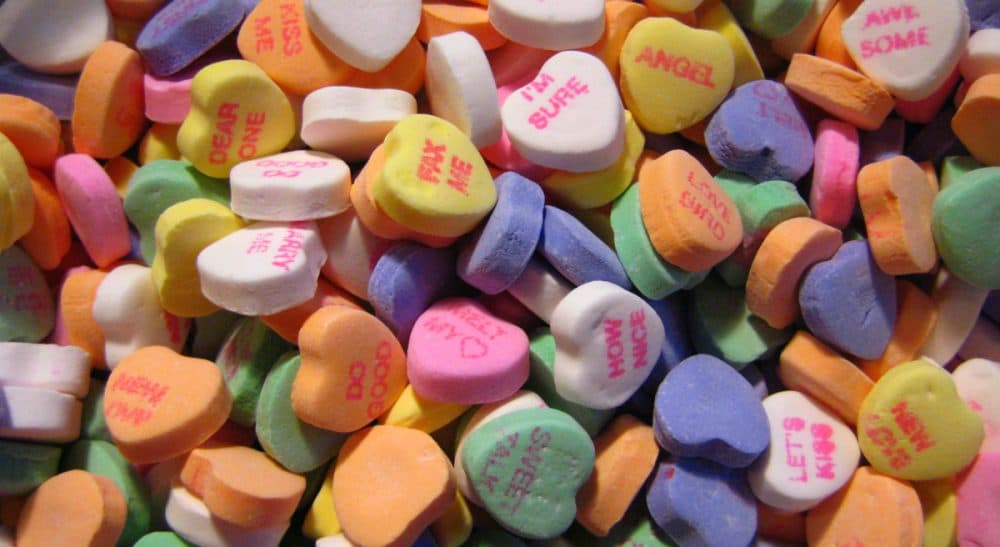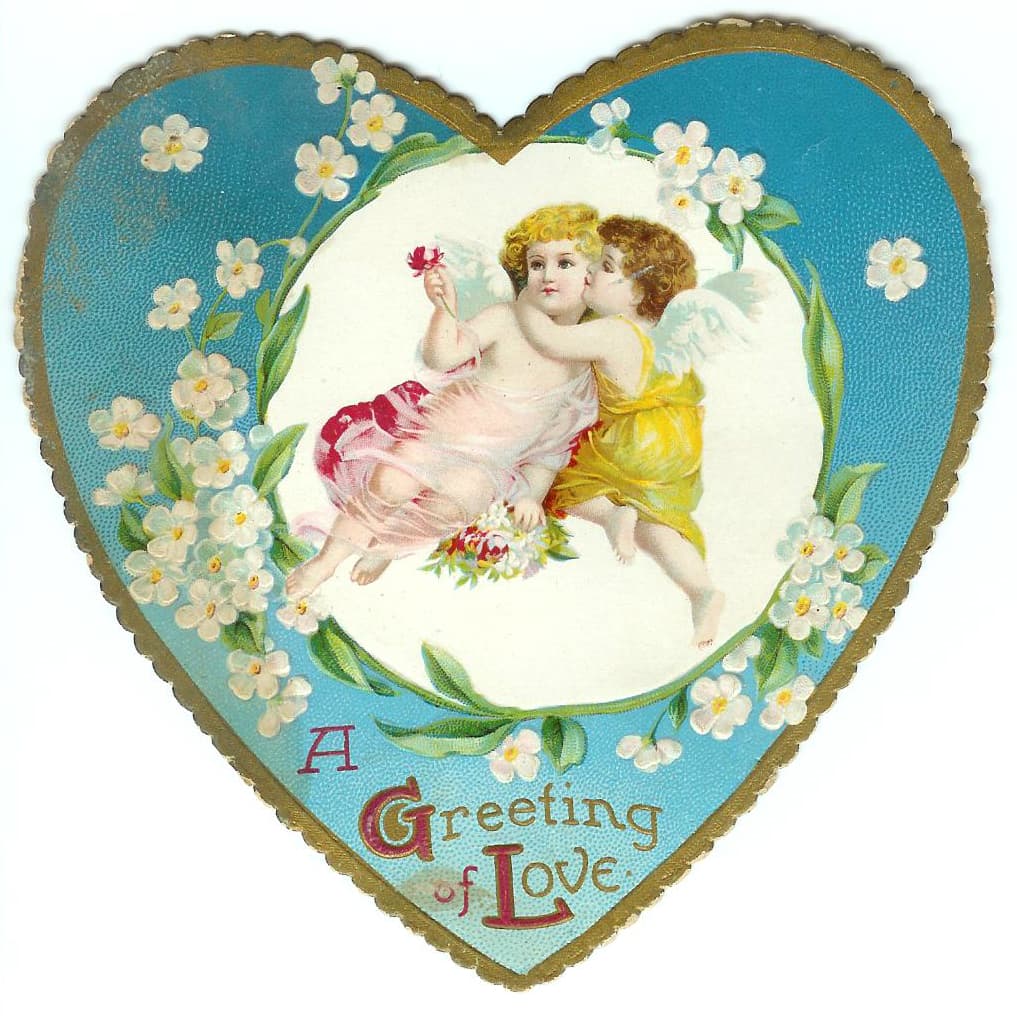Advertisement
Hearts Of Gold: Valentine's Day And Our National Identity

Several days before Christmas, my local Stop & Shop herded what seemed like miles upon miles of tinsel and lights into the sale bins. Santa had not even harnessed his sleigh and he was already consigned to an ignoble heap in the dairy aisle. Enthroned on his former shelf of glory were myriad red-wrapped chocolate hearts and pink Peeps awaiting Valentine’s Day. Why do we celebrate holidays? And what do they tell us about our national identity?
Last year, we spent $800 million wooing our pets—the same sum, for comparison, dispersed by the U.N. World Food Program to refugees from the conflict in Syria.
Anthropologists like myself have long observed that cultures everywhere regulate the passage of time by punctuating the mundane with the sacred. Whether in New Guinea or New England, festivals allow communities to step outside their ordinary routines and contemplate age-old truths. Americans today are no different. In a world defined by YouTube, Facebook, xBox and iPhone apps, holidays present Americans with brief respite from the ever-changing landscape of consumerist superficiality in which we dwell. We pause to venerate tradition and time-honored virtues – to cling to something Real. Or so we think. As it turns out, our national repertoire of holidays tells us far more about ourselves as modern consumers than as caretakers of hallowed traditions.
January is an unusual month in the American calendar. We collectively honor Martin Luther King. Some celebrate Epiphany. A few of us may even partake of Houseplant Appreciation Day, National Pie Day or National Handwriting Day. Of course, these occasions merit little in the way of last-minute shopping. Yet the winds of retail finally rescue us from the post-Christmas-Hanukkah-Kwanzaa doldrums in February, when our consumerist dreams turn to romance. This Valentine’s Day, Americans are expected to gift $18 billion of roses, candlelit dinners, diamond jewelry and other traditional tokens of love, such as Necco Sweethearts. Last year, we spent $800 million wooing our pets—the same sum, for comparison, dispersed by the U.N. World Food Program to refugees from the conflict in Syria.

The origins of Valentine’s Day remain unclear. The annals of Catholicism include dozens of sainted Valentines, two of whom were martyred on Feb. 14 in late antiquity. Yet the occasion and its namesakes would not become associated with matchmaking until Chaucer’s medieval poetry another millennium later. The Church was hardly pleased with the fusing of saintly chastity with amour, but the European folk had no such qualms, and carnal license and other forms of misrule often held sway. Indeed, European festivals often amounted to mini-rebellions against authority.
In the United States, Valentine’s Day largely passed unnoticed until the mid-19th century. With the rise of consumerism, mass production and department stores in the 1850s and ‘60s, the holiday emerged as a genuine American tradition. Modern holidays transformed the riotous carnivals of old into a shopping spree. Not surprisingly, the promoters of Valentine’s Day were agents of commerce: florists, confectioners, and, especially, printers who marketed novelties such as lace-paper cards and colorful lithographs. Each morning, in fact, as I drive to Wheelock College, I travel Louis Prang Street, a small thoroughfare in Boston that passes between the Museum of Fine Arts and the Fenway. Mr. Prang was instrumental in popularizing greeting cards in the U.S. and England. Sending paper tokens of affection was good for the heart, and even better for business.
Advertisement
Cupid, once a diabolical figure, was rebranded as cute. Window displays dazzled consumers, especially women keen to exercise their newly-won financial and social freedoms. And, predictably, critics bemoaned the commercialized corruption of emotion. Thus love, once the noblest ideal and sentiment, was reduced to a greeting card or, at Walmart.com today, Personalized Men’s “You + Me” Boxer shorts and the Katy Perry Killer Queen Fragrance Set.
Valentine’s Day as we know it, like most of our holidays, is an American invention, born of the marketplace and catering to a nation as committed to conspicuous consumption as to loftier values.
Valentine’s Day as we know it…is an American invention, born of the marketplace and catering to a nation as committed to conspicuous consumption as to loftier values.
As scholars of popular culture reveal, our holidays are a product of the very consumerism they deny behind a mask of ‘tradition.’ On Valentine’s Day, as on other holidays, Americans embark on a collective pilgrimage to the mall to procure the necessary ornaments, wrapping paper, dinnerware, gift baskets, cupcake decorations and enough candy to send the body politic into a diabetic coma. The content of our festivals often seems far less important than the color scheme.
Yet we extoll, year after year, the deep traditional sentiments, such as love, that seemingly make the check-out lines worthwhile. Our holidays are nothing if not an irresolvable conversation between meaning and materialism. That Valentine’s Day and all our holidays are invented traditions does not imply some conspiracy. Quite the opposite. Only by acknowledging our traditions as the collective mirrors they are can we fully glimpse the contradictions and unsettled currents of our national character. And that, as disquieting as it is, is something worth celebrating.
